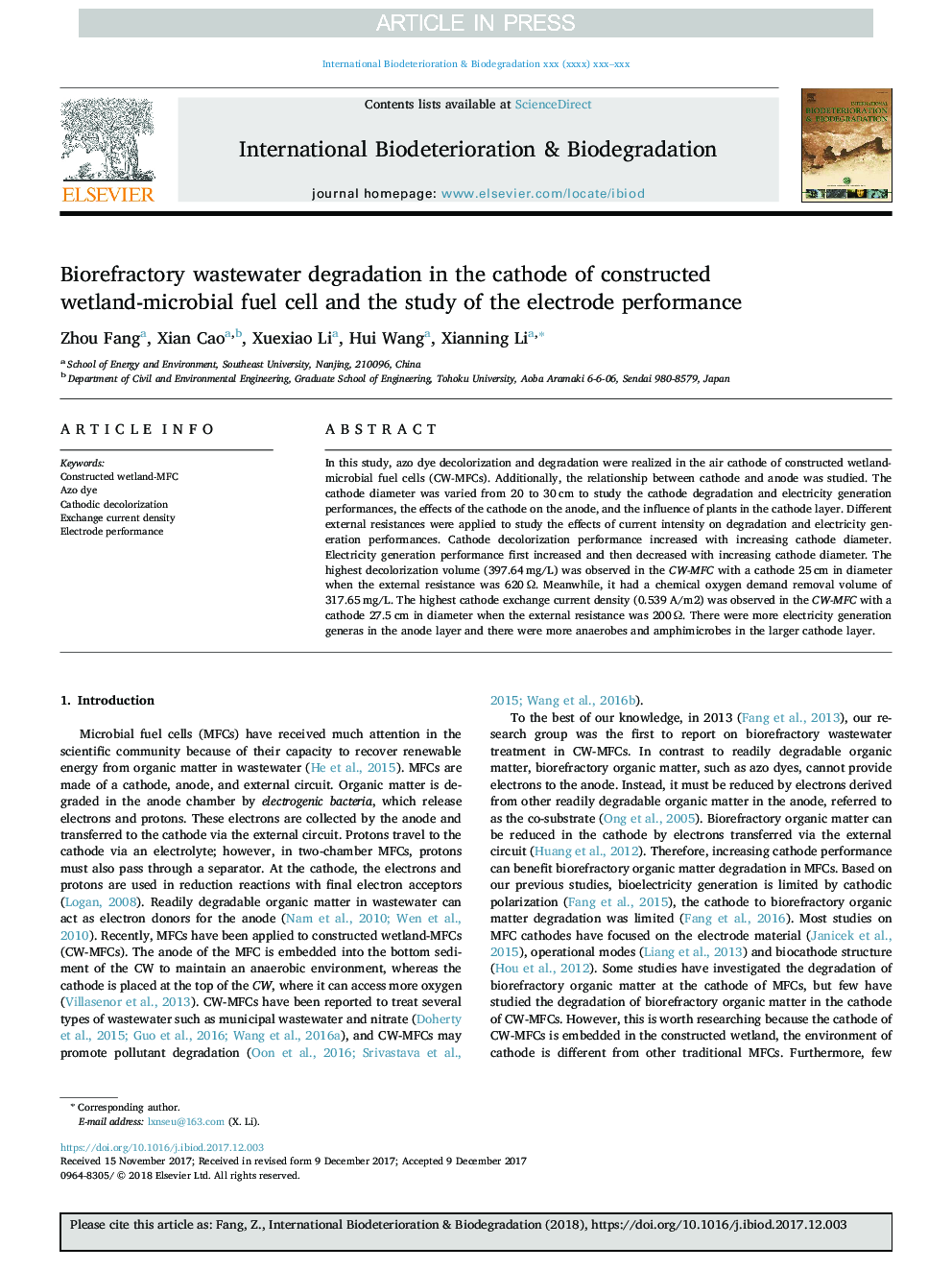| Article ID | Journal | Published Year | Pages | File Type |
|---|---|---|---|---|
| 8843827 | International Biodeterioration & Biodegradation | 2018 | 9 Pages |
Abstract
In this study, azo dye decolorization and degradation were realized in the air cathode of constructed wetland-microbial fuel cells (CW-MFCs). Additionally, the relationship between cathode and anode was studied. The cathode diameter was varied from 20 to 30â¯cm to study the cathode degradation and electricity generation performances, the effects of the cathode on the anode, and the influence of plants in the cathode layer. Different external resistances were applied to study the effects of current intensity on degradation and electricity generation performances. Cathode decolorization performance increased with increasing cathode diameter. Electricity generation performance first increased and then decreased with increasing cathode diameter. The highest decolorization volume (397.64â¯mg/L) was observed in the CW-MFC with a cathode 25â¯cm in diameter when the external resistance was 620â¯Î©. Meanwhile, it had a chemical oxygen demand removal volume of 317.65â¯mg/L. The highest cathode exchange current density (0.539 A/m2) was observed in the CW-MFC with a cathode 27.5â¯cm in diameter when the external resistance was 200â¯Î©. There were more electricity generation generas in the anode layer and there were more anaerobes and amphimicrobes in the larger cathode layer.
Related Topics
Life Sciences
Environmental Science
Environmental Science (General)
Authors
Zhou Fang, Xian Cao, Xuexiao Li, Hui Wang, Xianning Li,
